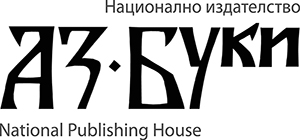Miroslav Minchev
Geo Milev School of Mathematics and Natural Science – Stara Zagora (Bulgaria)
https://doi.org/10.53656/nat2021-5.01
Abstract. When a copper coin is immersed with zinc into a solution of a zinc salt (, etc.) an electrochemical reaction occurs in the mixture. As a result, a thin layer of zinc appears on the surface of the copper which gives the impression for silver color. The purposes of this project are: to explain the phenomenon and to investigate relevant parameters; to measure the thickness of the zinc layer; to determine which metals can be covered with zinc in such experiments. Method for measuring the thickness of the zinc layer was obtained by using dimension properties of the coin – radius, height and mass. The advantage of this method is the fact that it can be applied for all metals whose form has an integrable volume. The thickness of the layer was determined to be in the order of 1 . The relationship between the thickness of the zinc and the time at which the coin has spent in the solution was also studied and an exponential tendency was observed. It was proved that only metals after hydrogen in the Reactivity series can be plated with zinc with this setup.
Keywords: zinc layer; electroplating and electroless plating; redox reactions; Reactivity series of metals


